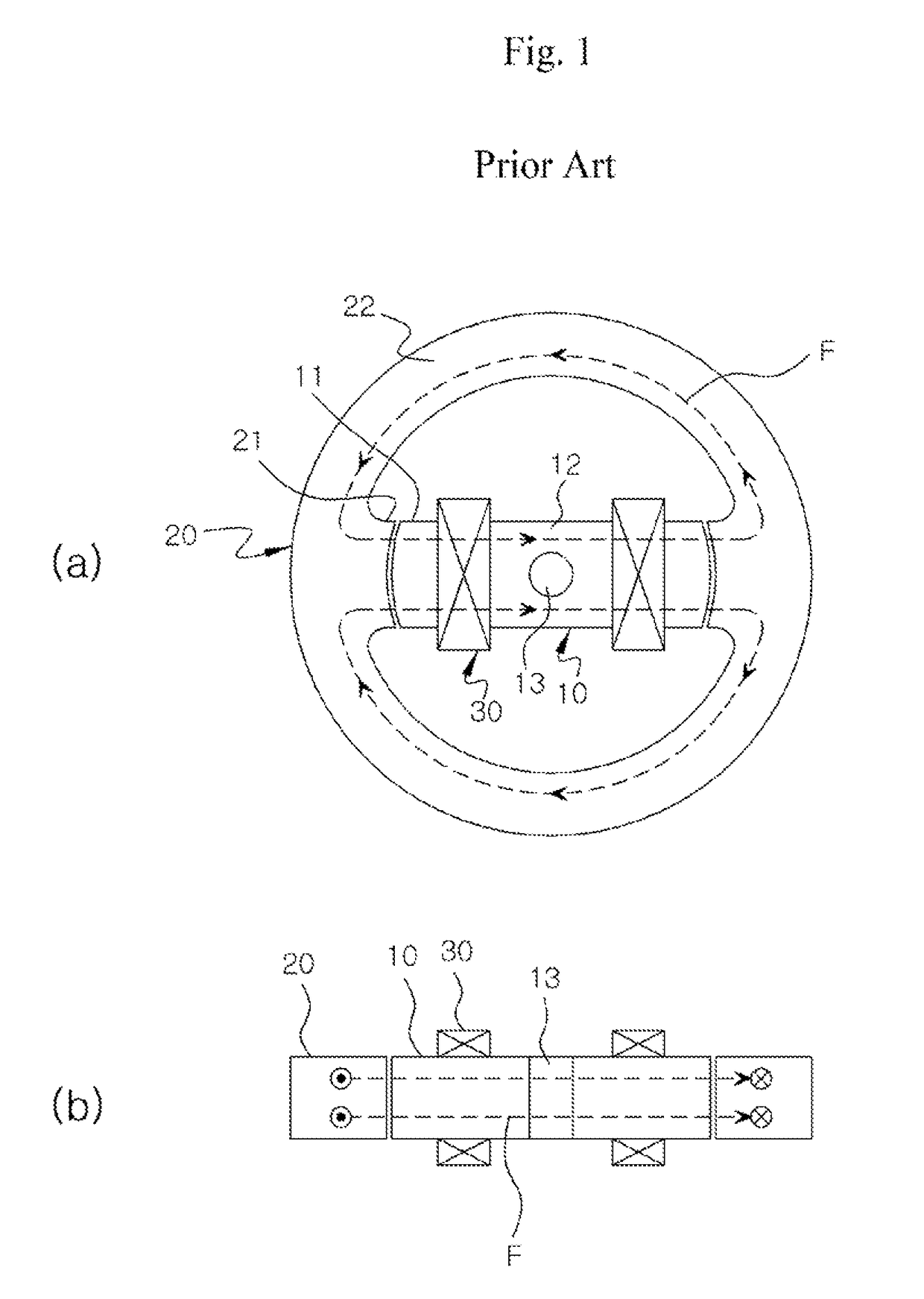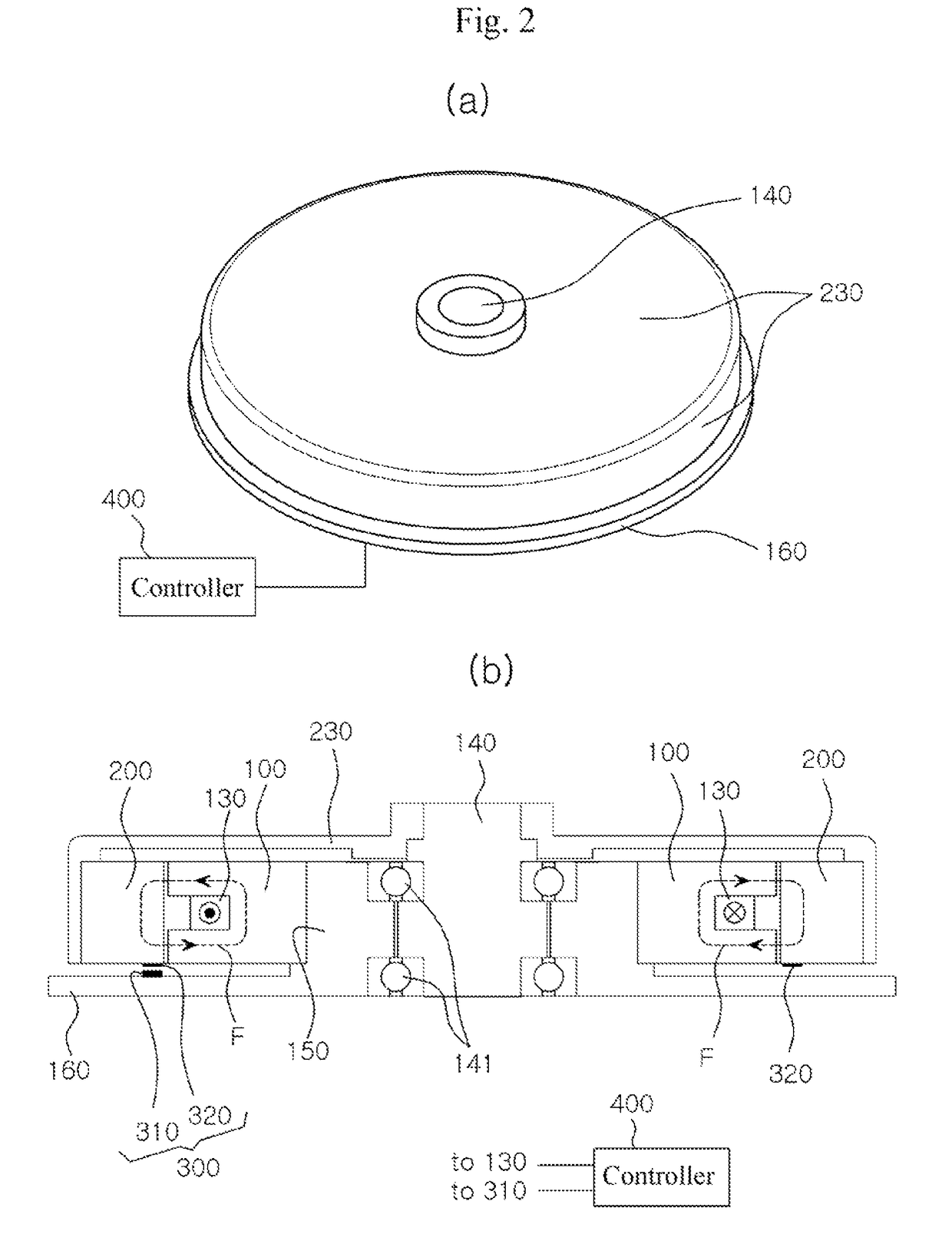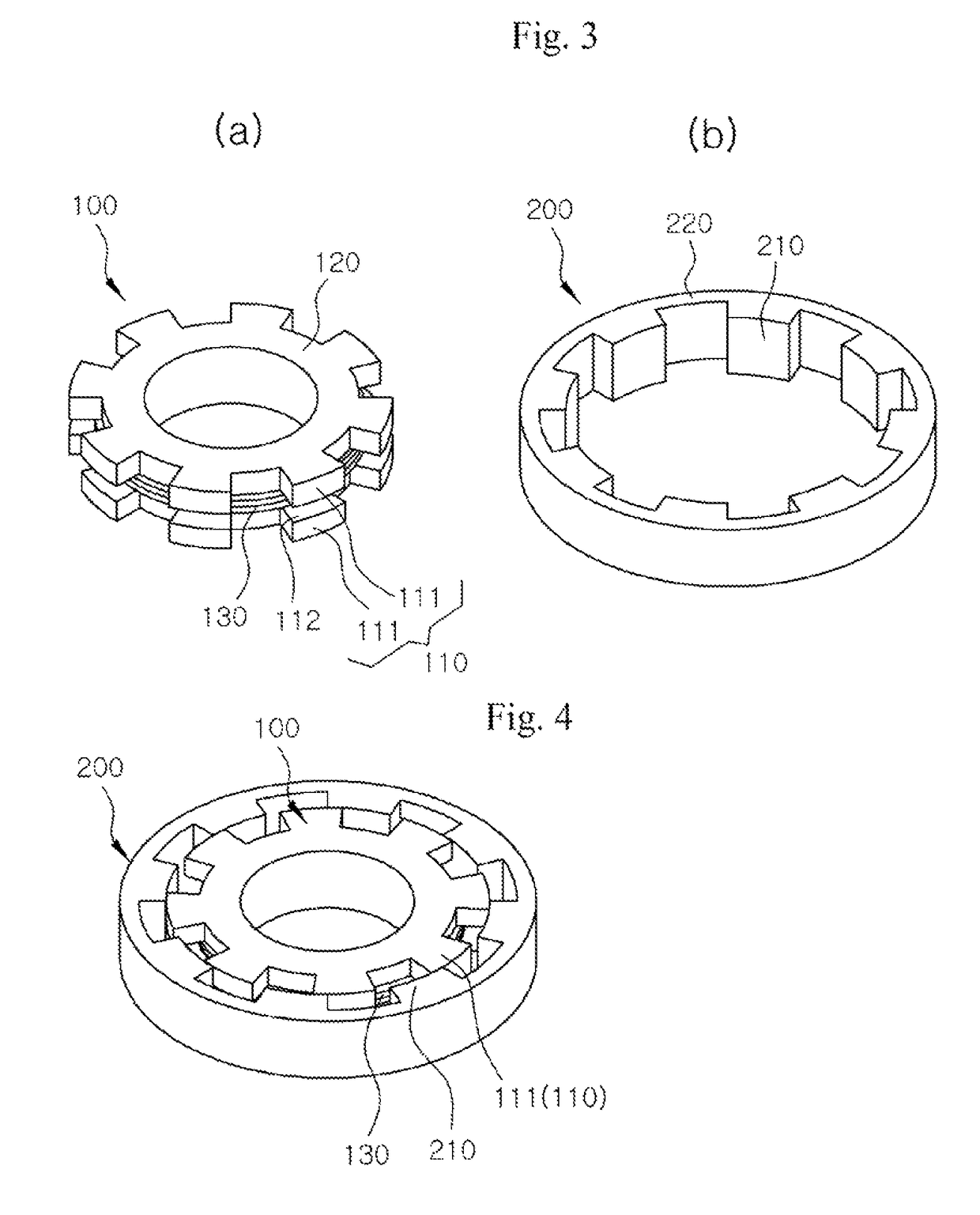Outer-rotor-type switched reluctance motor
a switched reluctance motor and outer-rotator technology, applied in the direction of synchronous motors, magnetic circuit rotating parts, magnetic circuit shape/form/construction, etc., can solve the problems of deteriorating the overall use efficiency of magnetic energy, difficult placement of excitation coil b>30/b> in a stable position, and too complicated coil winding work, etc., to achieve more hardness and durability, simplify the coil winding work, and slim down the effect of the effect o
- Summary
- Abstract
- Description
- Claims
- Application Information
AI Technical Summary
Benefits of technology
Problems solved by technology
Method used
Image
Examples
first embodiment
[0046]According to the present invention, the switched reluctance motor is of an outer rotor type and includes a stator core 100, a rotator core 200, a position detecting means 300, and a controller 400. According to the present invention as shown in FIGS. 2 to 5, the switched reluctance motor is a single-phase motor having a single coil 130 wound around the stator core 100.
[0047]The stator core 100 includes a cylindrical stator yoke 120 having a center portion bored therethrough in upper and lower directions, a plurality of stator salient poles 110 formed isotropic-rectangularly on the outer circumferential surface of the stator yoke 120 (or at equidistant intervals along the circumferential direction), and a coil 130 receiving electricity to create a magnetic flux. In the embodiment shown in the drawings, the motor is an eight-pole motor having eight stator salient poles 110, and the rotator core described below also has eight rotor salient poles 210.
[0048]According to the present...
second embodiment
[0089]FIG. 6 illustrates a perspective view (a) of a stator core and a perspective view (b) of a rotator core among components of an outer-rotator-type switched reluctance motor according to the present invention. FIG. 7 is a plan view virtually illustrating changes in relative positions of stator cores 100 (100-1 and 100-2) and a rotor core 200 (200-1 and 200-2).
[0090]Referring to FIGS. 6 and 7, the stator core 100 includes a first stator core 100-1, a second stator core 100-2 stacked on the first stator core 100-1, with an annular magnetic insulator 170 disposed therebetween. The stator salient poles of the first stator core 100-1 and the stator salient poles of the second stator core 100-2 are placed along vertical lines.
[0091]The rotator core 200 includes a first rotator core 200-1 surrounding the first stator core 100-1 with an interval disposed therebetween and a second rotator core 200-2 surrounding the second stator core 100-2 with an interval disposed therebetween and stack...
third embodiment
[0094]FIG. 8 illustrates a perspective view (a) of a stator core and a perspective view (b) of a rotator core among components of an outer-rotator-type switched reluctance motor according to the present invention.
[0095]According to the third embodiment of the present invention, the stator core 100 includes three stator cores 100-1, 100-2, and 100-3 stacked one over another and annular magnetic insulators 170 arranged between the three stator cores 100-1, 100-2, and 100-3. The stator salient poles 110 form eight rows of salient poles on the outer circumferential surface thereof and aligned in line along the rotation shaft direction. That is, an eight-pole structure is formed.
[0096]The rotator core 200 has also such a structure in which three rotator cores 200-1, 200-2, and 200-3 respectively corresponding to the three stator cores 100-1, 100-2, and 100-3 are stacked one over another with annular magnetic insulators 240 disposed therebetween. Rotor salient poles 210-1, 210-2, and 210-...
PUM
 Login to View More
Login to View More Abstract
Description
Claims
Application Information
 Login to View More
Login to View More - R&D
- Intellectual Property
- Life Sciences
- Materials
- Tech Scout
- Unparalleled Data Quality
- Higher Quality Content
- 60% Fewer Hallucinations
Browse by: Latest US Patents, China's latest patents, Technical Efficacy Thesaurus, Application Domain, Technology Topic, Popular Technical Reports.
© 2025 PatSnap. All rights reserved.Legal|Privacy policy|Modern Slavery Act Transparency Statement|Sitemap|About US| Contact US: help@patsnap.com



